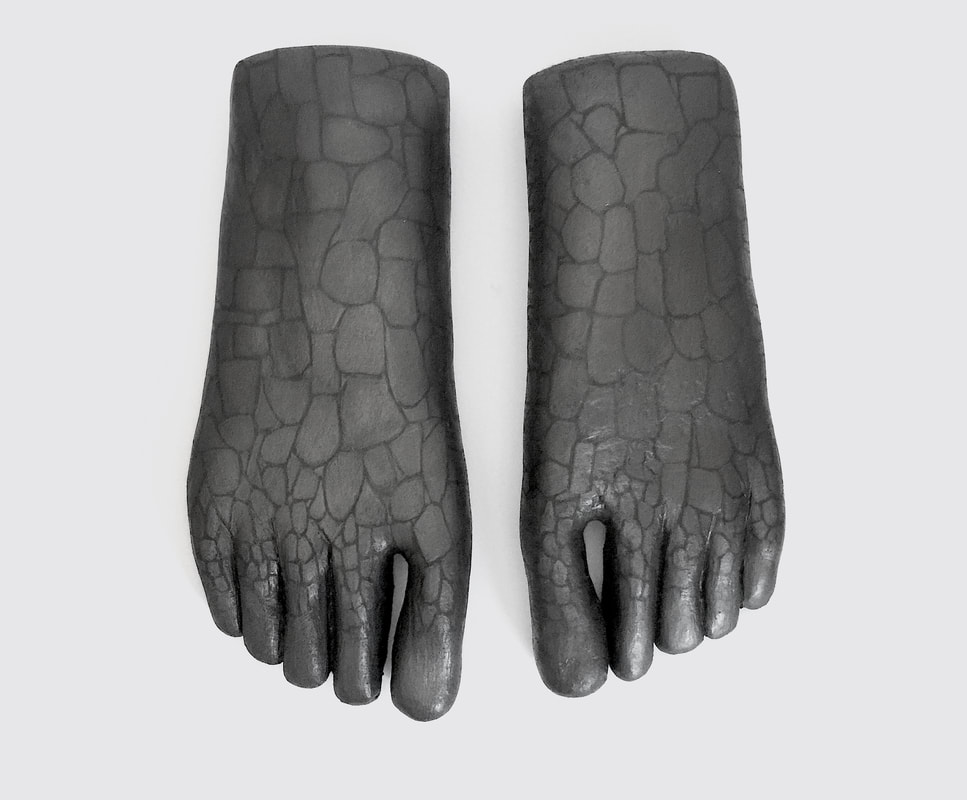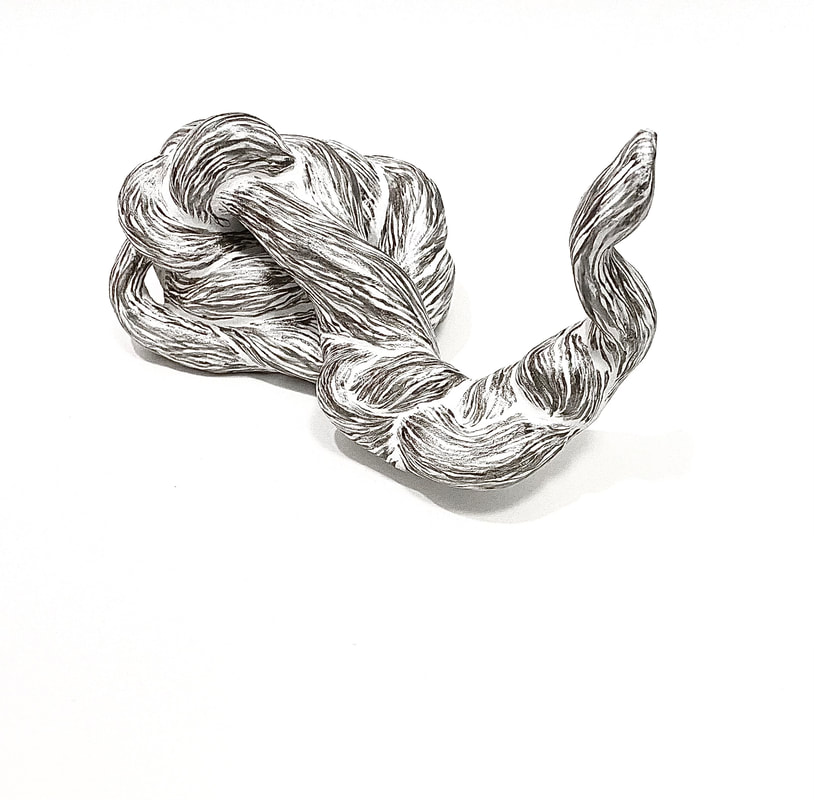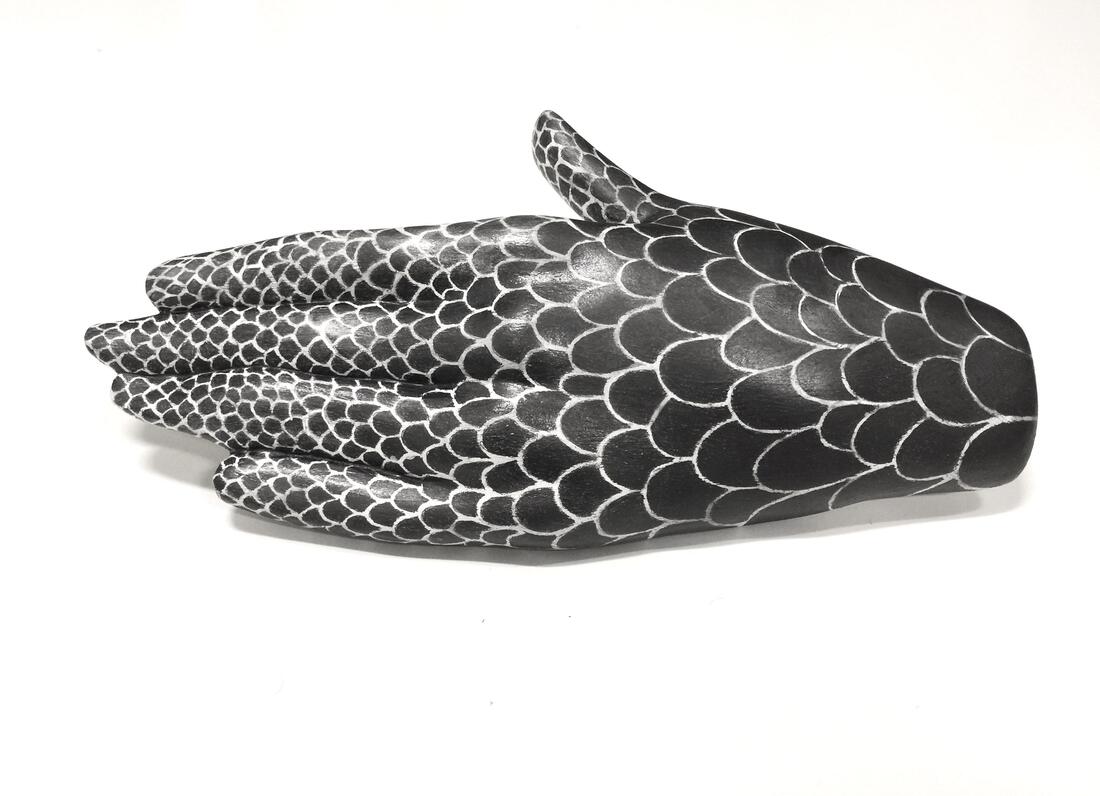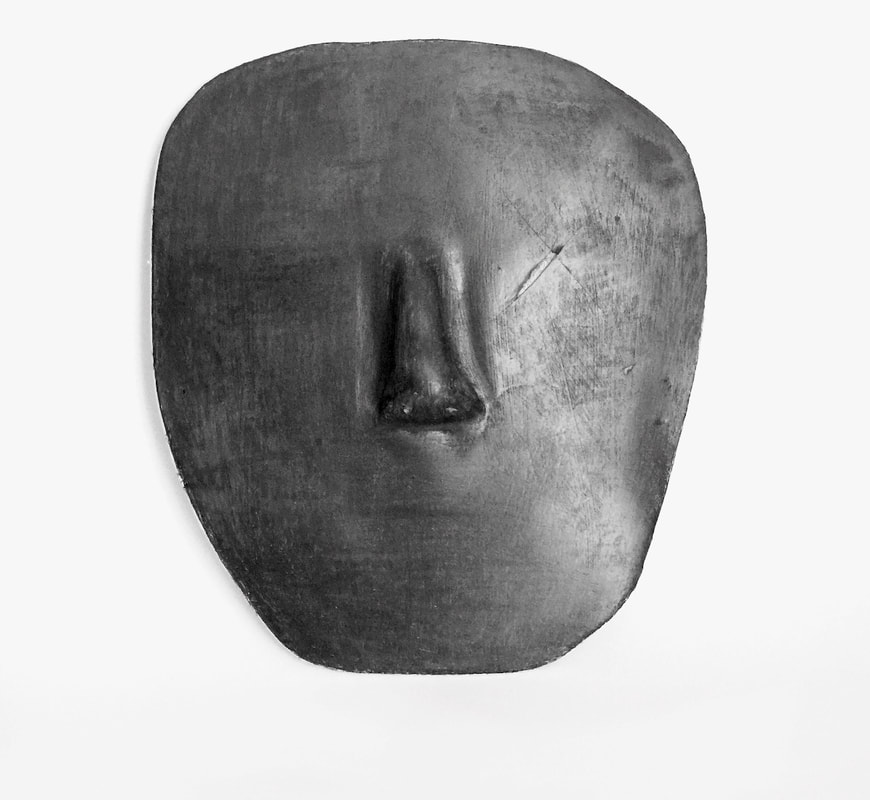I see my three-dimensional drawings as a return to a way of working that I first began when on the MA Sculpture at Wimbledon School of Art.
Back then I drew on top of planks of wood, paper bags, chairs (see the one on Contemporary British Drawing title page) shirts to name a few. All these objects were already in existence and I was appropriating them as hosts for my drawings that paradoxically mapped the object surfaces back onto themselves.
When I left Wimbledon money and space were tight so I went back to drawing on paper -the drawings were created in order to be projected on a cinematic scale. I was also travelling a lot and I've always liked how lo-fi and transportable pencil drawing can be.I was obsessed by capturing the transition from light to darkness with the projected works and you can see this in the extreme chiaroscuro in the drawings. After 10 years of working in this way I knew that I had to return to drawing across three dimensions.
I tried to ignore this knowledge for a while but it wouldnt go away so in order to find a way back to it and deal with the fear (and excitement!) I decided to concentrate on making paper clay objects that were similar to those in the British Museum collections. I am a huge history nerd and I got excited by the artefacts that dated from the neolithic era through to the Ancient Egyptian's and the early to late Medieval. I felt that the makers from these periods seemed to have a directness of intent thatI really wanted to feel in my own work. This directness is also useful for bypassing ones inner critic and I knew that in order for my practice to develop I had to attempt that. The first time that I drew on one of my sculptures was a major breakthrough for me. I think up till that point I hadn't realised that I could make an object in order to draw on it. Now the floodgates are open and its very exciting as I feel I'm at the start of another cycle of work.
Sometimes the ideas arrive fully formed as if shot by an arrow into my brain. 'Aint No Saint was like that - I could picture it fully made in my mind prior to making it. Most of the time, though, the works each progress through a series of evolutions where I try out a drawing. This can be as many as 9 attempts on the same host sculpture.
When it finally comes right I feel as though it has become what it wanted to be. It's very hard for me to say what comes first, the sculpture or the drawing, as both are equally important. Pieces such as Medusa Shit and Guts were made to be challenging forms, tests if you like. As in, if you are going to draw across three dimensions then what is the best type of form for testing that? Others, such as the hands, masks, and now the heads are made specifically to be hosts to drawings, but the individual drawing materialises through negotiation with the language of their forms. I love how their three-dimensionality pushes the two-dimensional medium into becoming a three-dimensional drawing that can confront a viewer.
I am always interested in keeping the language of the drawing somewhere between the ancient past and the far distant sci-fi future. My friend, the Egyptologist Dr Elizabeth Frood, writes with such precision and eloquence on the Ancient Egyptian approaches to the metaphorical reality of sculpture and painting. Her writing has had a big influence on how I perceive my own practice. A similar process of enlivenment that the Ancient Egyptians had a very practical approach to is central to my practice. To me the act of drawing activates the meaning of the whole work.
The sculptures don't work for me when they are blank, without the intervention of the mark making process. Once that evolution has taken place then I feel that they have a definite identity of their own. I’ve had some thrillingly uncanny moments in the studio when the drawing literally takes on it’s own reality and feels as though it is inhabited.
At the moment I'm working with graphite pencil and black ink on sculpted paper-clay. I love how the materials are easily available and quite humble but at the same time afford such sophistication in their conceptual application. It’s also important to me that the materials are non-toxic and affordable. In today’s financial climate drawing is still an accessible medium for the majority of artists. I like the fact I can make my sculptural forms from paper-clay, that there is no additional process as they don’t need a kiln. This autonomy is also why I’m still engaged with drawing. It is still one of the most enduring and direct routes to self-expression. It blows my mind that drawing has a far longer history in human culture than bread. It precedes our domestication. Regarding the readings of my work, I try not to think too hard about what I am trying to say in each particular work except I know that one piece leads me to another. Back when I was making the projected drawings I came very close to taking all the joy out of the work for myself as I have such a strong work ethic. I made a definite decision with this new cycle of works to try not to overthink, and to let my unconscious do a lot of the talking. It is easy to lack confidence in this, especially if justifications are required, but I feel that I am best filling myself up with knowledge that I have a natural propensity for in order that this can then emerge through the pieces I make. I’m really excited at the transformational and metamorphic aspects that have recently come through in the work. The material remains of ancient history continue to be a big inspiration but these references are now being filtered through research into aspects of the personal and collective unconscious.
You ask what I am constantly fighting against in the work? I am always trying to walk the line and strike the balance between the meaning in the host sculpture and the meaning in the drawing. I feel that my most successful pieces end up being more than the sum of their parts and I often feel that they were downloaded, made through listening to what comes through. I love the discipline of drawing, and the vigor of working with such a limited palette. I am always trying to challenge my own methods and application of the medium, to learn.
Marianne Walker
Marianne Walker



